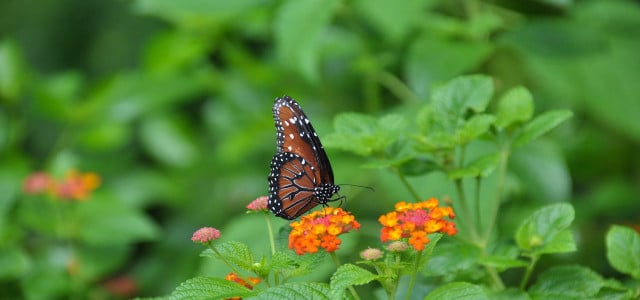If you’re looking for ways to make your yard more inviting for birds and other pollinators, consider adding some flowering shrubs. We’ve put together a list of both sun- and shade-loving flowering shrubs and bushes guaranteed to bring birds, bees, and butterflies to your outdoor space.
Flowering shrubs make a great addition to any garden. Not only can they be admired for their gorgeous colors and scents, you will also enjoy the different wildlife they can bring to your yard. It’s worth taking the time to learn about the plants you put in your garden. If you plan it out correctly, you can end up with non-stop color from spring until fall – just pay attention to the bloom times!
When it comes to gardening, it’s also helpful to know what type of sun exposure you have. Plants, shrubs and trees are often labeled with their light requirements.
- Full Sun: plants with this label need at least 6 hours of direct sunlight in order to bloom and thrive.
- Partial Sun: a minimum of 2 hours of direct sunlight is often required for plants with this label. These often thrive in a location that has sun for half the day and shade for the other half.
- Full Shade: these plants want less than an hour of direct sunlight per day. If they’re planted under trees and get filtered light, they can handle full day filtered sunlight, but can also thrive in full shade.
Tip: Take a minute to check out which USDA plant hardiness zone you live in, because certain plants will thrive under your growing conditions, while others won’t do as well.
Flowering Shrubs for Full Sun
1. Butterfly Bush: For More Than Just Butterflies
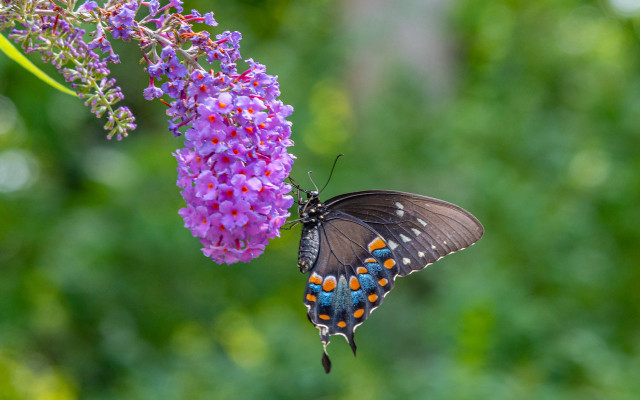
Zones: 5 to 9
Height: 24-30ft. tall
Spread: 24-30ft. wide
Plant Time: Spring (after the last frost), Fall (before the first frost)
Bloom Time: Early summer through first frost
Exposure: Full Sun
Butterfly bushes are a low-care flowering shrub to add to your garden if you want to attract butterflies, bees, and hummingbirds. Also known as the ‘summer lilac’, they provide lovely summer and fall colors to your yard in various shades of pink, red, white, and purple. The butterfly bush is fairly low maintenance, only requiring some deadheading, and annual pruning come wintertime. Plant this shrub in the spring after the last frost, or in the fall before the first frost.
Note: butterfly bushes are originally from China, and actually tend to crowd out native plants. In cooler zones, they are easy to maintain and won’t grow out of control. If you live in a warmer zone, it’s best to avoid planting butterfly bushes, or try planting a native/non-invasive variety like:
- Buddleia marrubifolia – native to the Chihuahuan Desert
- Buddleia racemosa – native to Texas
- Buddleia scordioides – native to Arizona, New Mexico and Texas
- Buddleia sessiliflora – native to Arizona and Texas
- Buddleia utahensis – native to Arizona, California, Nevada and Utah
2. Forsythia: Gorgeous Yellow Flowering Bush
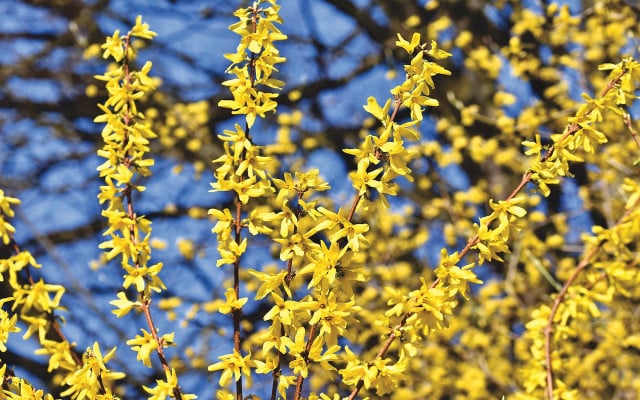


Zones: 3 to 8
Height: 10ft. tall
Spread: 12ft. wide
Plant Time: Fall
Bloom Time: Spring
Exposure: Full Sun
Also nicknamed the “Easter Tree”, the yellow forsythia blooms are seen (in certain regions) as one of the first signs of spring. This gorgeous flowering shrub can be used as a border, or even as a stunning backdrop – just be sure to give them enough space when planting. In order for this bush to thrive, it’s best to plant it in the fall, and then prune it back in the spring after it has bloomed. During the growing season, they need constant cutting back to keep them tidy, however, you can also let them grow wild. The forsythia bush is incredibly hardy, is resistant to most pests, and will attract birds like finches and cardinals along with bees and butterflies.
3. Rose of Sharon: For a Hint of the Tropics
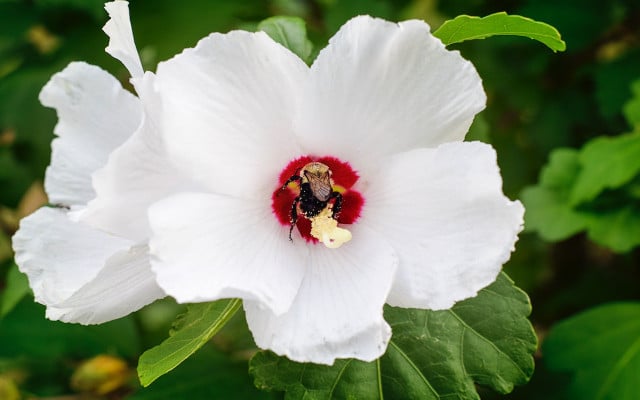


Zones: 5 to 9
Height: 9-12ft. tall
Spread: 10ft. wide
Plant Time: Spring or fall
Bloom Time: Late Summer/Early Fall
Exposure: Full Sun (can handle partial sun)
Closely related to the tropical hibiscus flower, the Rose of Sharon is a beautiful flowering shrub that can handle cooler temperatures. Many say it thrives on neglect, so yellowing leaves may be a sign of overwatering, as opposed to underwatering. This flowering bush is native to China and India, though has naturalized across the continent, and often requires pruning for both aesthetic and practical purposes. They can be a fairly aggressive re-seeder if given the chance, but keeping on top of deadheading is an easy enough solution. The flowers come in a wide variety of colors including white, pink, orange, yellow, and blue, and will draw all sorts of pollinators to your yard.
4. Roses: The Classic Flowering Shrub
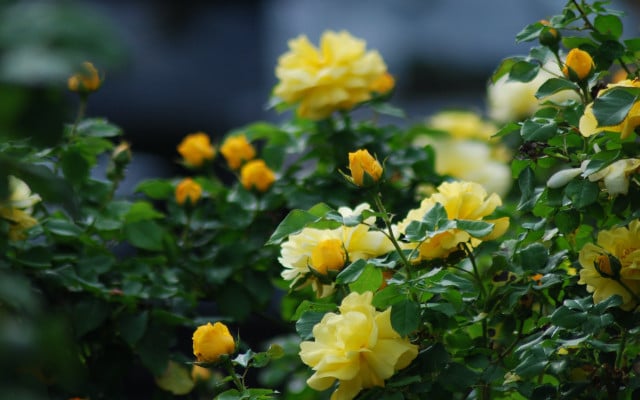


Zones: 5 to 9 (though some varieties can handle zone 3)
Height: 4-6ft. tall
Spread: 4-6ft. wide
Plant Time: Spring (before the last frost), Fall (6 weeks before the first frost)
Bloom Time: Early summer through fall
Exposure: Full Sun
There are honestly hundreds of rose bush varieties, so it will pay to do some research. You can find both dwarf and giant varieties, which make a great addition to any garden and we recommend choosing a bee-friendly variety. For any flowering shrub rose, it’s best to plant in the spring after the last frost, or in the fall about 6 weeks before the first frost. Roses are by far one of the showiest garden plants, and can add an incredible perfume to your outdoor space. They do require some pruning in the late winter, or early spring – and if you live in an area with a cold winter, you’ll want to cover them up. It’s also worth noting that rose bushes tend to be susceptible to powdery mildew and aphids.
Read More: 6 Rose Diseases and Pests and How to Treat Them
5. Spirea: a Bush for Bumblebees
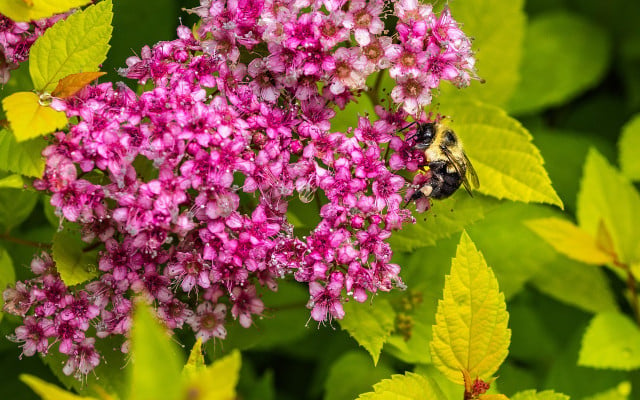


Zones: 3 to 9
Height: 1-8ft. tall
Spread: up to 6 ft. wide
Plant Time: Late spring, early fall
Bloom Time: May/June or July/August (variety dependant)
Exposure: Full Sun
Bumblebees love spirea for their beautiful white, pink, purple, and red colored blooms. This flowering shrub should be planted in the late spring, or you can wait until the early fall. It is generally a fairly low maintenance shrub, but it can be susceptible to the same diseases as roses (see above) because they are related. Spirea can be pruned in the late winter or early spring when the plant is dormant – and feel free to go wild, because this hardy shrub can handle a liberal pruning. Depending on the variety, you can enjoy a change in foliage color as the seasons progress, ranging from red to lime green.
6. Viburnum: A Paradise for Birds
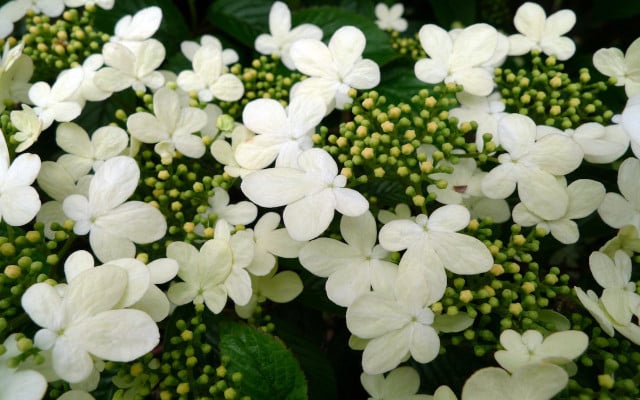


Zones: 2 to 9
Height: 8-10ft. tall
Spread: 3-5ft. wide
Plant Time: Spring or fall
Bloom Time: Early Spring
Exposure: Full Sun
Viburnums are a fairly low-maintenance shrub, and over 150 varieties are native to North America. They are often chosen for their flowers and berries, which attract pollinators. Birds love these flowering shrubs because they provide an excellent habitat for them, along with berries for them to eat. Consider planting viburnum if you want to attract cardinals, eastern bluebirds, cedar waxwings, and pine grosbeaks to your yard. This flowering bush is most commonly used as a border hedge due to how much it fills in, and the gorgeous fall foliage is simply an added bonus.
7. Weigela: Flowering Shrubs for Hummingbirds
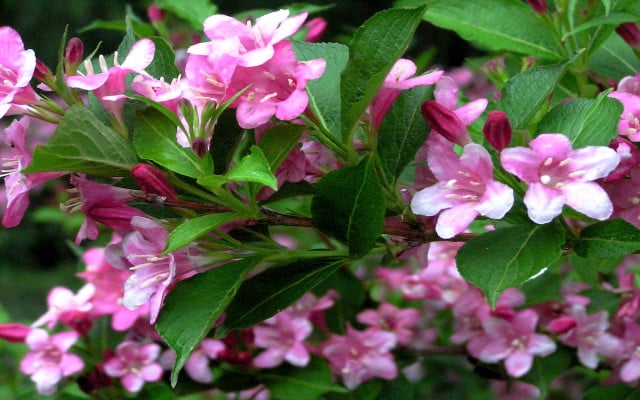


Zones: 4 to 8
Height: 6-10ft. tall
Spread: 9-12ft. wide
Plant Time: Spring or fall (during cooler months)
Bloom Time: Spring/Early Summer
Exposure: Full Sun
This flowering shrub blooms abundantly in the springtime, and continues to bloom throughout the summer, making it a favorite among landscapers. The cone or trumpet shaped flowers attract hummingbirds and butterflies, which are a welcome addition to any garden. Weigela shrubs used to be incredibly popular, and are now making a comeback. Another great feature of this flowering bush is that it requires next to no pruning. Many gardeners like the natural shape this shrub assumes, so pruning isn’t really necessary. However, if you do choose to prune, do so immediately after the spring bloom – otherwise, you may end up destroying next year’s blooms.
Shade-Loving Flowering Bushes
8. Elderberry Bushes: Enjoyment for Everyone
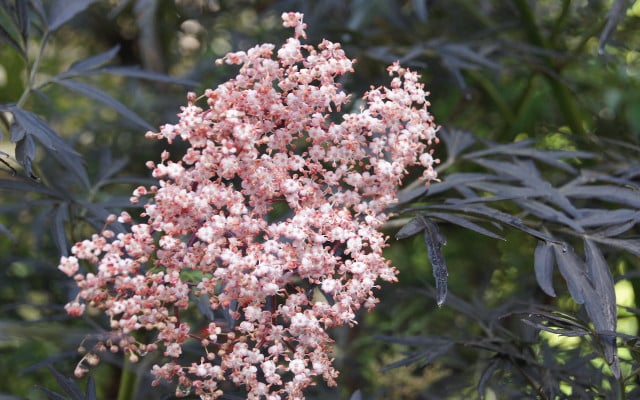


Zones: 4 to 7
Height: 8-12ft. tall
Spread: 8-12ft. wide
Plant Time: Spring
Bloom Time: Early Summer
Exposure: Partial Sun
These flowering Sambucus nigra bushes are loved by birds, insects, and humans alike for their tiny, aromatic flowers, as well as their tart berries. The pink or white elderflowers can be used to make elderflower syrup, which can be added to drinks as well as baked goods. If you want to have some berries to harvest, you’ll need to plant other Sambucus nigra varieties nearby. This will allow your flowering shrub to produce edible berries, which will bring birds like indigo buntings, orioles, eastern bluebirds, grosbeaks, and song sparrows to your yard. You can prune this bush like a perennial every year if you want, though it’s not necessary. Word of warning: the berries are toxic to pets!
Read more: How to Find, Collect, and Use Elderberries
9. Hydrangea: Flowering Bushes for Shade
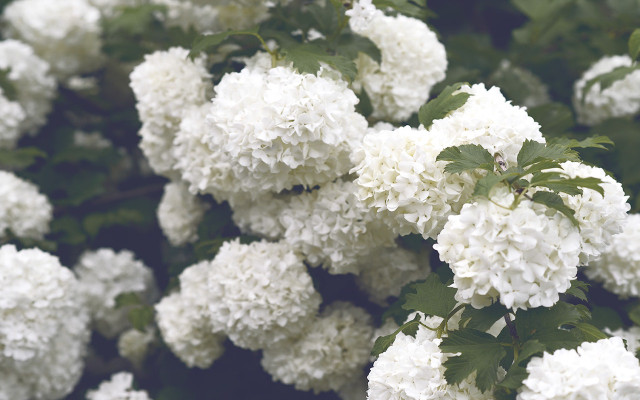


Zones: 3 to 9
Height: 3-8ft. tall
Spread: up to 12ft. wide
Plant Time: Late spring, early fall
Bloom Time: Mid-Spring through Early Fall
Exposure: Partial Sun
Hydrangeas are yet another classic flowering bush loved by many for their low maintenance and incredibly showy blooms. Once established, you can even change the color of your hydrangea variety by altering the acidity of your soil. Like most flowering bushes and shrubs, hydrangeas should be planted in the late spring or early fall, and when it comes to pruning, do so after the first bloom. Hummingbirds love the hydrangea flowers, as do bees and humans! If you want to harvest some flowers for an indoor arrangement or to dry hydrangea blooms, be sure to leave some on the bush for the pollinators.
Read more: Hydrangea Winter Care: Tips and Tricks for Colder Months
10. Mountain Laurel: A Unique & Native Flowering Shrub
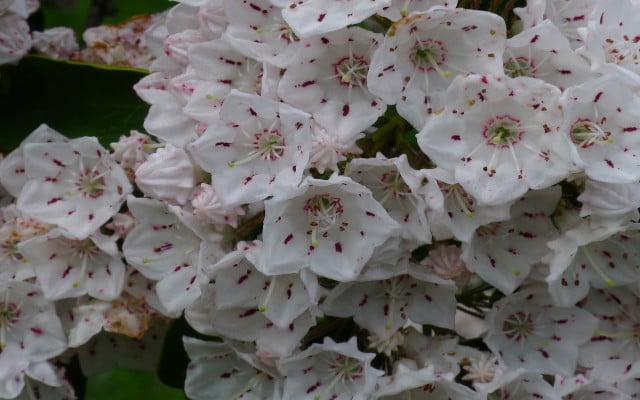


Zones: 5 to 9
Height: 6-15ft.
Spread: 6-15ft.
Plant Time: From spring to summer
Bloom Time: Mid-April until Summer Solstice
Exposure: Full Shade to Partial Sun
Mountain laurel is a shade-tolerant flowering shrub that is native to North America. It’s uncommon for shade-loving plants to produce such beautiful flowers, and these unique blooms will make an incredible addition to any garden. It’s a close relative to azaleas and rhododendrons, though it is definitely a hardier variety as the foliage can be seen well into the winter months. Bees and other pollinators love the mountain laurel blooms because the weight of their body landing on the flower causes the pollen to catapult up and cover them in it. Deadhead frequently to avoid the flowering shrub becoming leggy. Caution: all parts of the plant are toxic to pets and humans, so keep children and pets away from the shrub.
11. Summersweet: For the Sweet Smell of Summer
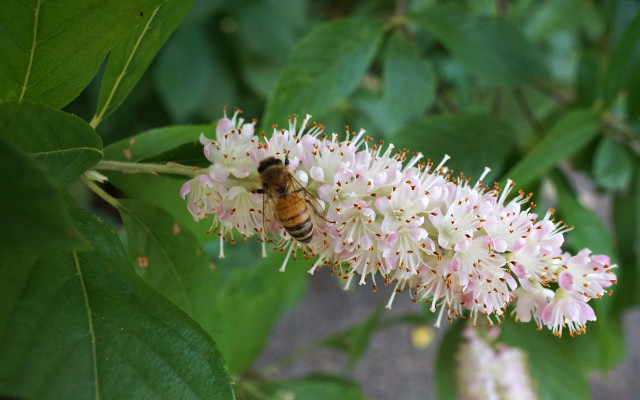


Zones: 3 to 9
Height: 3-8ft. tall
Spread: 4-6ft. wide
Plant Time: Spring
Bloom Time: July and August
Exposure: Partial Sun
Summersweet is an aromatic flowering shrub that shows off late summer blooms in various shades of white and pink. The flowers are known for their unique shape, the ability to bloom in shade, and for attracting bees, butterflies, and hummingbirds. Not only is this flowering bush native to the eastern and southern parts of the country, but it can handle salty air from oceans or salt-spray in urban areas. You can deadhead old flowers from the bush, but regular maintenance isn’t required. For best results, plant summersweet in the spring, and surround it with other plants because it looks quite bare until it starts to fill in.
Before You Plant: Gardening Tips
We recommend that you go speak to an expert at your local gardening center to find out more information for your garden. With many of the flowering shrubs listed, there are hundreds of different varieties, so it’s important to figure out which one will be best for you – and benefit pollinators, other insects, and birds! Additionally, certain varieties are not recommended in specific areas due to the likelihood of choking out native plants. If you have any doubts, contact local nature conservation groups in your area.
Happy planting!
** Links to retailers marked with ** or underlined orange are partially partner links: If you buy here, you actively support Utopia.org, because we will receive a small part of the sales proceeds. More info.Do you like this post?






